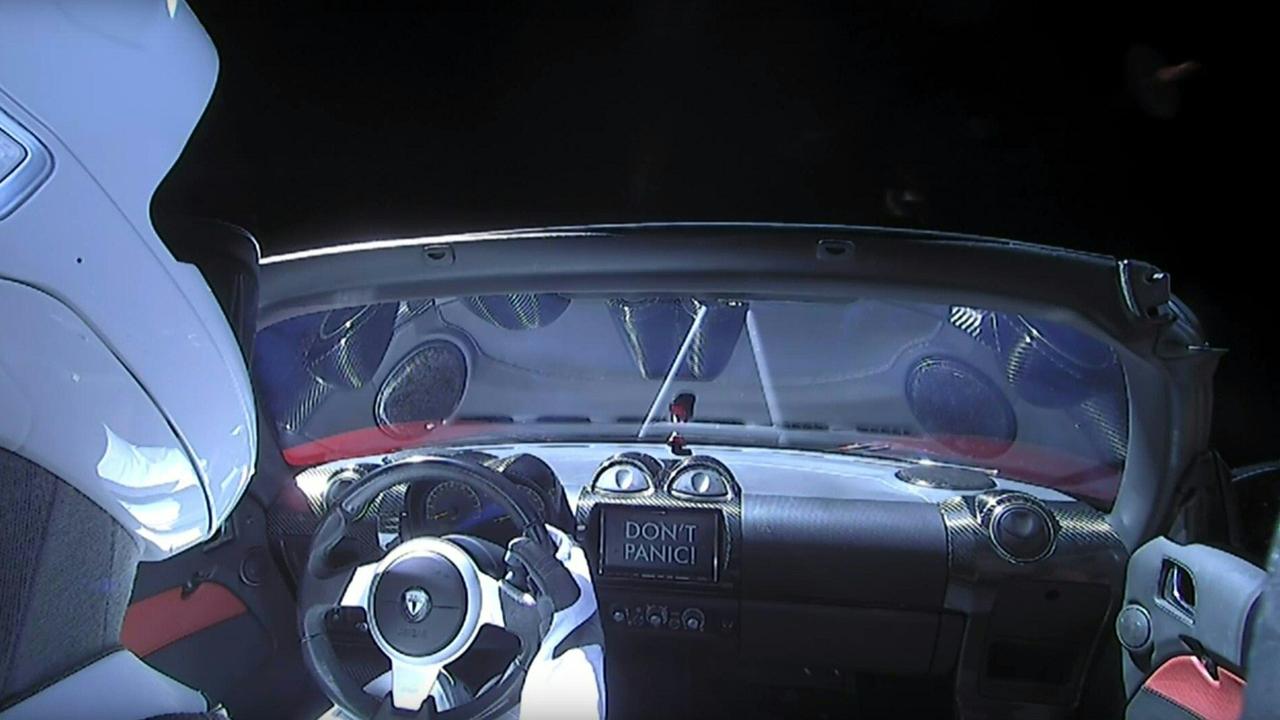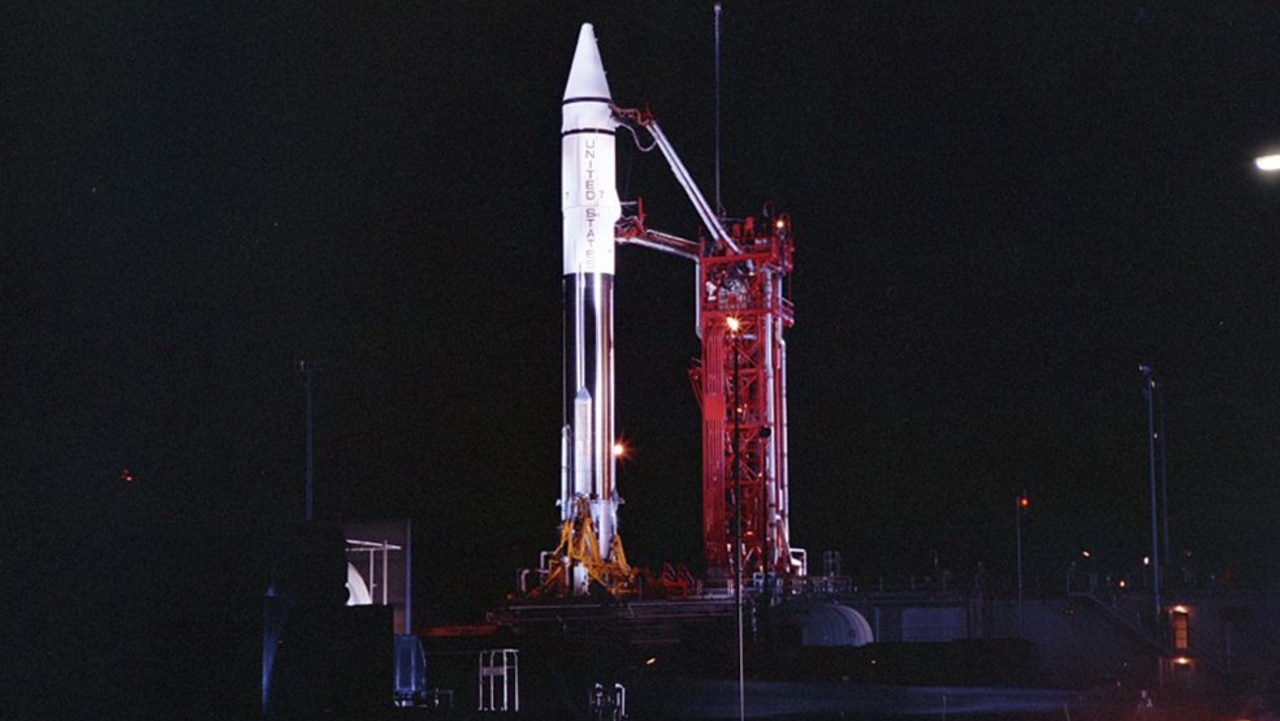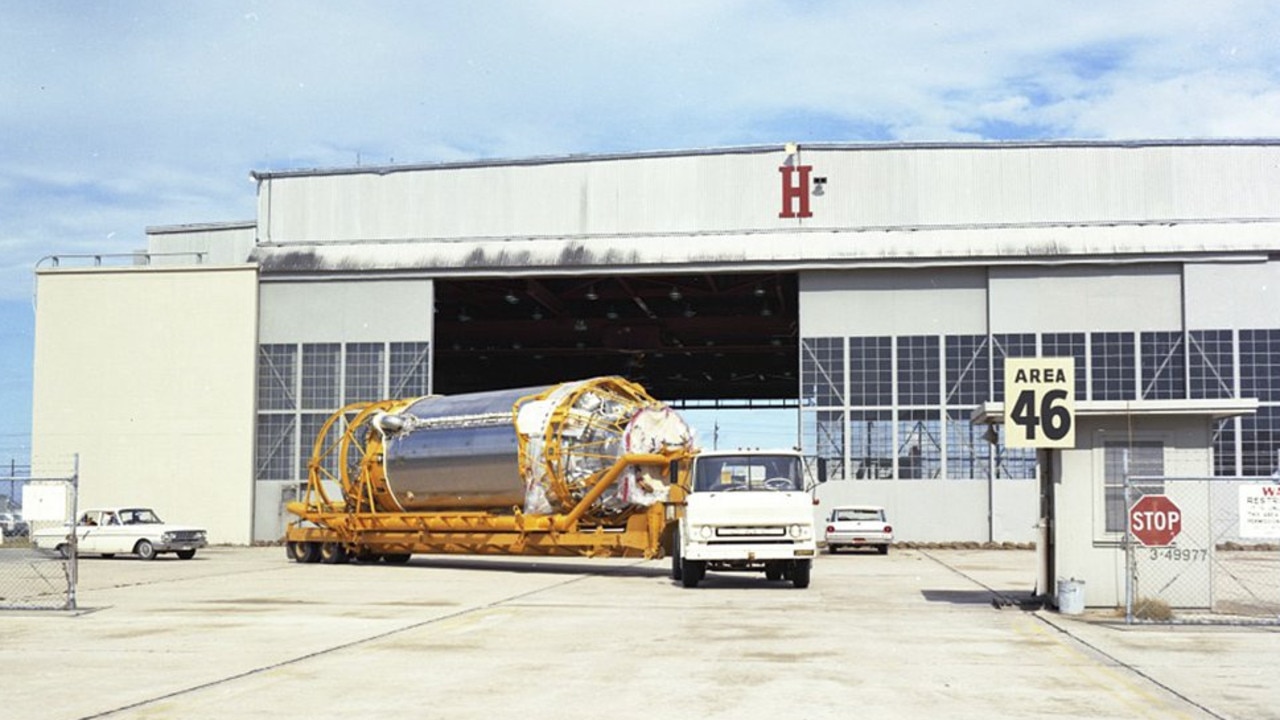Starman in a Tesla Roadster car flies past Mars
Elon Musk’s car has just passed Mars after he blasted it into space in 2018. Elsewhere in the solar system, an object thought to be an asteroid is likely a junk NASA rocket wandering since 1966

READING LEVEL: GREEN
Elon Musk’s Tesla Roadster has just passed Mars after he blasted it into space in 2018.
The car features a mannequin* passenger called Starman who sits behind the steering wheel.
SpaceX tweeted*: “Starman, last seen leaving Earth, made its first close approach with Mars today — within 0.05 astronomical units, or under 5 million miles (8 million kilometres), of the Red Planet.”
The Tesla Roadster launched on-board the first test flight of SpaceX’s Falcon Heavy rocket.
Elon Musk wanted to send his own personal car into space.
Kids News covered the launch in February 2018. You can read that story HERE.
The cherry red Tesla Roadster has the message “Don’t panic!” emblazoned* on the dashboard.

After surviving a five-hour journey through the Van Allen Belt — an area of high radiation — the car is on a journey through space that could last a billion years and take it as far as 400 million kilometres from Earth — the same as a trip around Earth’s equator 10,000 times.
Mr Musk launched the car to generate interest in SpaceX and said “silly and fun things are important”.
According to the Where is Roadster? website, Starman is around 61 million kilometres from Earth.
Starman was launched with music playing in each ear.
The Where is Roadster? website revealed: “If the battery was still working, Starman has listened to Space Oddity* 264,803 times since he launched in one ear, and to Is there Life On Mars?* 356,811 times in his other ear.”
The vehicle orbits the Sun around once every 557 days.
That means another Mars fly-past should happen again someday and Where is Roadster? will continue to track the progress.
This story was first published on The Sun and is republished with permission.

IS THAT AN ASTEROID?
An object first thought to be an asteroid is expected to be pulled into Earth’s gravity and become a mini moon next month.
But instead of a rock, the newly discovered object appears to be an old rocket from a failed Moon-landing mission 54 years ago that’s finally making its way back home, according to NASA’s leading asteroid expert. Observations should help confirm its identity.
Dr Chodas speculates* that asteroid 2020 SO is actually the Centaur upper rocket stage that successfully propelled NASA’s Surveyor 2 lander to the Moon in 1966 before it was discarded. The lander ended up crashing into the Moon after one of its thrusters failed to ignite on the way there. The rocket swept past the Moon and into orbit around the Sun as intended junk, never to be seen again — until perhaps now.
A telescope in Hawaii last month discovered the mystery object heading our way while doing a search for asteroids that could collide with Earth.
The object is estimated to be 8m long based on its brightness. The old Centaur would be less than 10m long including its engine nozzle and 3m in diameter.

What caught Dr Chodas’ attention is that its near-circular orbit around the Sun is quite similar to Earth’s — unusual for an asteroid. The object is also in the same plane as Earth, not tilted above or below, whereas asteroids usually zip* by at odd angles. Lastly, it’s approaching Earth at 2400 km/h, slow by asteroid standards.
As the object gets closer, astronomers should be able to better chart its orbit and determine how much it’s pushed around by the radiation and thermal effects of sunlight. If it’s a Centaur — like a lightweight, empty can — it will move differently than a heavy space rock less influenced by outside forces.
That’s how astronomers normally differentiate* between asteroids and space junk like abandoned rocket parts, since both appear as moving dots in the sky. There likely are dozens of fake asteroids out there, said Dr Chodas.

GLOSSARY
- mannequin: dummy; model of a person
- tweeted: posted on Twitter
- emblazoned: boldly shown
- Space Oddity: song by David Bowie
- Is there Life On Mars?: song by David Bowie
- speculates: form a theory without firm evidence
- zip: move quickly
- differentiate: tell the differences between two things
EXTRA READING
Powerful rocket sends car into space
Astronauts into orbit on history-making space flight
Space tourists to go into super-high orbit in 2021
Astronauts feast for Christmas in zero gravity
QUICK QUIZ
- When did the car launch into space?
- What is displayed on the dashboard?
- Which two songs are playing for Starman?
- What do astronomers now think the asteroid is?
- Why have they changed their mind?
LISTEN TO THIS STORY
CLASSROOM ACTIVITIES
1. Write a poem or song
Starman has been on a unique journey.
Write a poem or song that gives the important details of this journey so far and what is possibly to come. You can choose the style of poetry for this activity.
Here is an example of how you could start. (You may choose to use this, or come up with your own beginning.)
Launched into orbit in Twenty, eighteen
That’s the day, Roadster was last seen.
Use the details from the article and/or with parent or teacher permission visit the ‘Where is Roadster’ website to find out more details of the journey.
Time: allow 40 minutes to complete this activity
Curriculum Links: English, Science, Critical and Creative thinking
2. Extension
When launching the car in 2018, Mr Musk said ‘silly and fun things are important’. Do you agree?
While this could definitely be described as ‘silly and fun’, is launching a car into space to travel in orbit for billions of years important?
Write a list of PROS and CONS of launching his car. Consider the publicity that has been achieved for space travel, the cost of launching the car, what can be learnt about space from tracking the car, the amount of ‘space junk’ that has been left in space already and any other related thoughts
After writing your list, consider whether you think this exercise was ‘important’. Write a short paragraph with your opinion and supporting reasons.
Time: allow 30 minutes to complete this activity
Curriculum Links: English, Science, Critical and Creative thinking
VCOP ACTIVITY
Verb adventures
With a partner see if you can identify all the doing words/verbs in this text. Highlight them in yellow and then make a list of them all down your page. Now see if you and your partner can come up with a synonym for the chosen verb. Make sure it still makes sense in the context it was taken from.
Try to replace some of the original verbs with your synonyms and discuss if any are better and why.
HAVE YOUR SAY: What do you think of a car driving through space? Is that a worthwhile project?
No one-word answers. Use full sentences to explain your thinking. No comments will be published until approved by editors.

